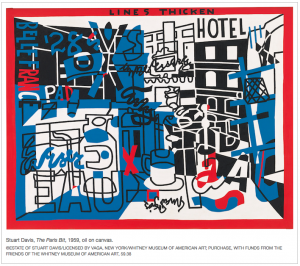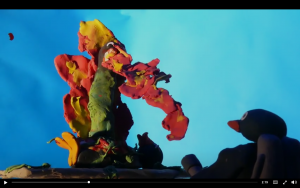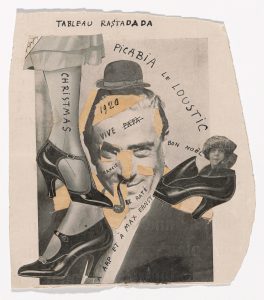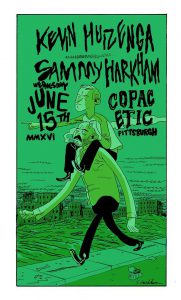Aaron Cockle with In Pieces Part 2; Art crit; Dan Clowes WTF?; Kramers Ergot on the road; Cult of Claymation Cthulhu; Dada@MoMA; “Sonata in primordial sounds”
—————————————————————————————————

CW’s Featured Comics continues this week with Part 2 of Kurt Ankeny’s In Pieces: Someplace Which I Call Home.
—————————————————————————————————

In the sense that he starts with the idea that the canvas is a limited area to be divided, to be designed, he is following a European tradition. It is the opposite of the concept of the image which unfolds and spreads out, as in the panoramas of the Hudson River School or the panoramas of American Action-Painting where the edges of the canvas are the last facts to be considered, not the first. Many abstract painters today, for instance, work on unstretched canvas tacked to the wall and decide on the size and proportions of the painting after it is finished. This would be as unworkable an approach for Davis as it would for Mondrian or Léger, since the exercise of will and consciousness can only be accomplished within a fixed space. For artists who insist on complete control, the world must be square; there must be boundaries to act against.
— Elaine De Kooning on Stuart Davis circa 1957 via ARTNews
—————————————————————————————————

—————————————————————————————————
This Wednesday in Pittsburgh and this Thursday in Brooklyn.
—————————————————————————————————

Pingu’s The Thing, by Lee Hardcastle
—————————————————————————————————
Dadaglobe Reconstructed reunites over 100 works created for Dadaglobe, Tristan Tzara’s planned but unrealized magnum opus, originally slated for publication in 1921. An ambitious anthology that aimed to document Dada’s international activities, Dadaglobe was not merely a vehicle for existing works, but served as a catalyst for the production of new ones. Tzara invited some 50 artists from 10 countries to submit artworks in four categories: photographic self-portraits, photographs of artworks, original drawings, and layouts for book pages. The exhibition brings together these photographs, drawings, photomontages, and collages, along with a selection of related archival material, to reconstruct this volume. Though never published, due to financial and organizational difficulties, Tzara’s project addresses concerns about art’s reproducibility that continue to be relevant today.
— via Museum of Modern Art
—————————————————————————————————

Julie Doucet’s Carpet Sweeper Tales
Doucet’s fragmented and reconstituted sound-language echoes Kurt Schwitter’s Dada “sound-poems” and the zaum, or transrational poetry, of Russian Futurist Aleksei Kruchenykh. Both Schwitter and Kruchenykh abstracted words in order to liberate language from meaning: their letterforms are descriptive rather than prescriptive. In Schwitter’s “Ursonate,” which roughly translates to “sonata in primordial sounds,” the four movements are interspersed with a coda that comprises the German alphabet read backward; each of the three iterations is meant to be read aloud with a different pitch and tempo. Much of the poem relies on the repetition of sounds—“Lanke trr gll / Ziiuu lenn trll? / Lümpff tümpff trll.” Kruchenykh’s “Hum of Hillclimbing Locomotive” is a collection of sounds that approximate not just the noise of a train engine but also, importantly, its laboring momentum: “boro / choro / two / one / hubb / sham / ga / gish! / boro sorko ba.” In the same way, Doucet’s collection of sounds and patterns isn’t an unruly mess: she harnesses the constructed ejections and exclamations together, and they accrue a syntax.
— Via Nicole Ruddick at TCJ
—————————————————————————————————

